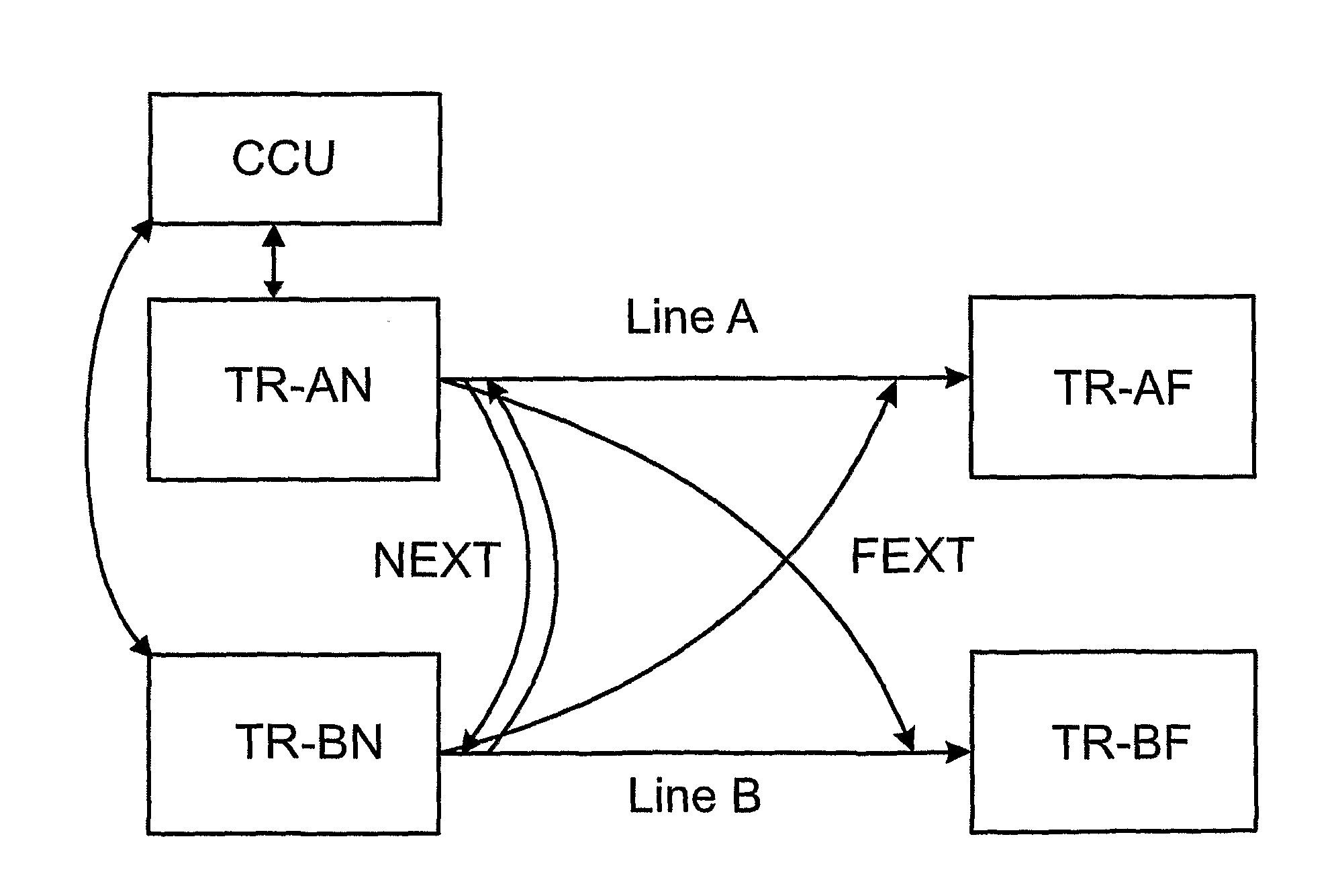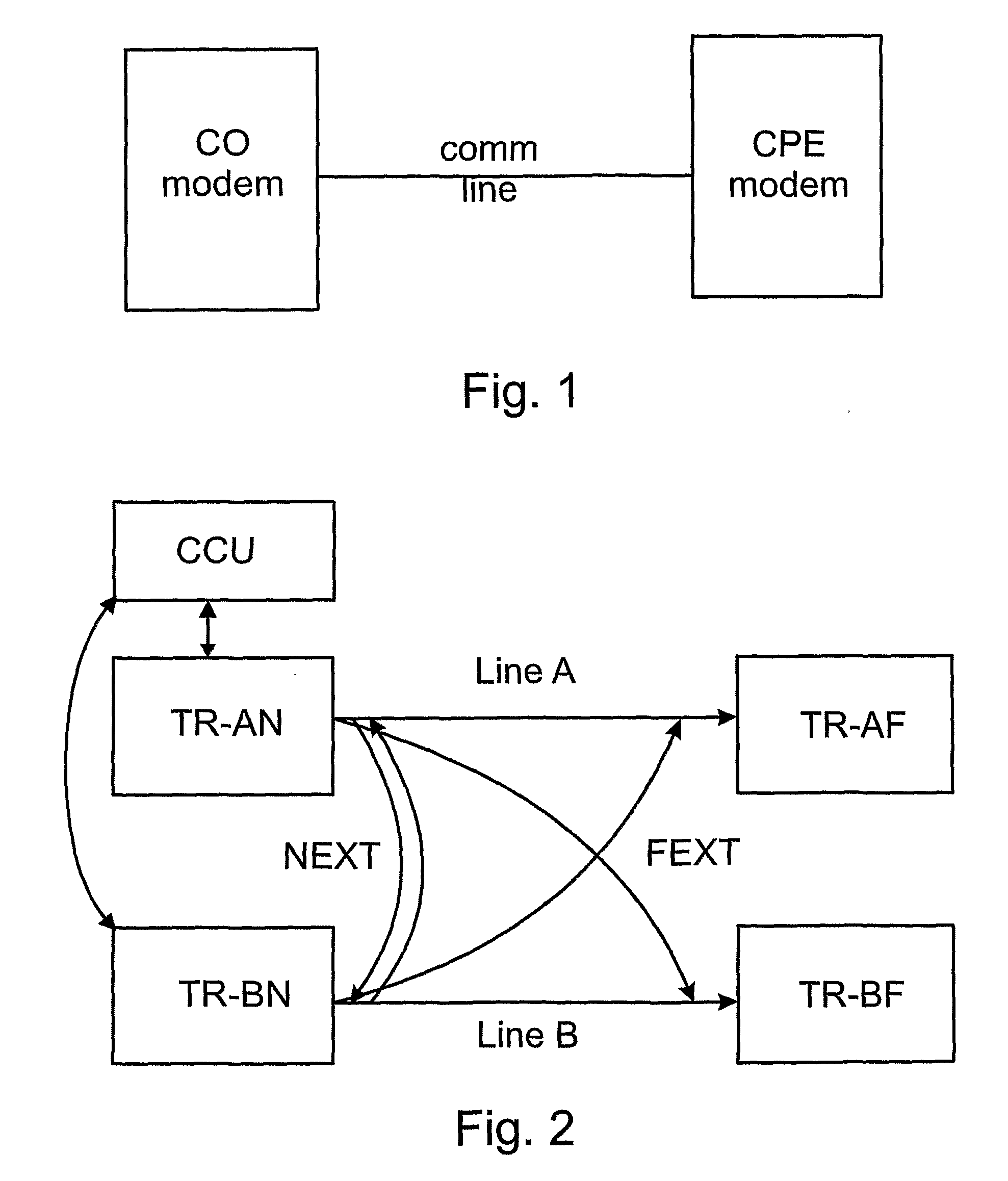Method for Determining Automatically a Fext/Next Transfer-Function
a technology of automatic determination and communication line, applied in the direction of frequency-division multiplex, transmission monitoring, instruments, etc., can solve the problems of increased noise in the received signal on this line, long cable, and inaccessible cable ends
- Summary
- Abstract
- Description
- Claims
- Application Information
AI Technical Summary
Benefits of technology
Problems solved by technology
Method used
Image
Examples
Embodiment Construction
[0045]Referring first to FIG. 1, a typical DSL (digital subscriber line) system can be seen with a communication line between a CO (central office) modem and a CPE (customer premises equipment) modem. For example, according to ITU-T G.992.1 Annex A the communication on an ADSL line is separated into voice communication in a frequency band up to 4 kHz and into two digital communication bands for upstream data communication (25 kHz to 138 kHz) and downstream data communication (138 kHz to 1104 kHz). These communication channels are divided into N=255 sub channels with centre frequencies being a multiple of 4,3125 kHz also called subcarriers. The use of sub channels or bins will be achieved by a transmission system using the principles behind Orthogonal Frequency Division Multicarrier (OFDM). In ITU-T G.992.1 / 3 / 5 and G.993.1 / 2, the modulation method is called Discrete Multi-Tone (DMT) and is similar to OFDM. Using DMT is useful since it allows the communications equipment (user modem a...
PUM
 Login to View More
Login to View More Abstract
Description
Claims
Application Information
 Login to View More
Login to View More - R&D
- Intellectual Property
- Life Sciences
- Materials
- Tech Scout
- Unparalleled Data Quality
- Higher Quality Content
- 60% Fewer Hallucinations
Browse by: Latest US Patents, China's latest patents, Technical Efficacy Thesaurus, Application Domain, Technology Topic, Popular Technical Reports.
© 2025 PatSnap. All rights reserved.Legal|Privacy policy|Modern Slavery Act Transparency Statement|Sitemap|About US| Contact US: help@patsnap.com



